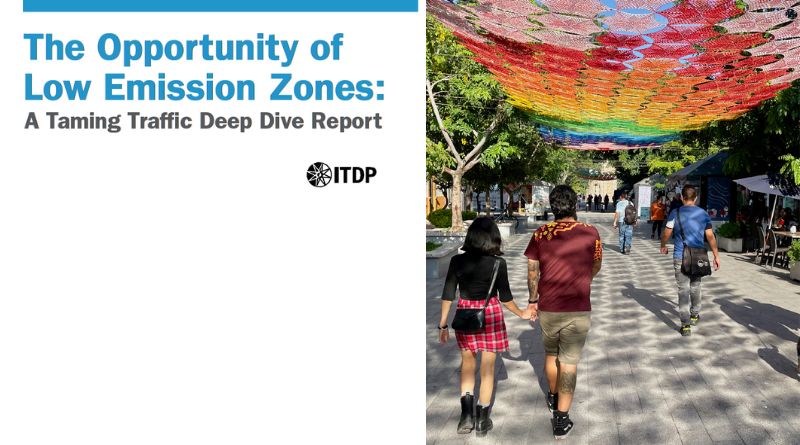Dana Yanocha, Yeojin Kim, and Jacob Mason. (2023). The Opportunity of Low Emission Zones: A Taming Traffic Deep Dive Report.
As urban policymakers strive to create healthier cities, they may tackle the challenge of pollution through the strategic use of Low Emission Zones (LEZs). In the report “The Opportunity of Low Emission Zones: A Taming Traffic Deep Dive Report,” Dana Yanocha, Yeojin Kim, and Jacob Mason seek to define, and examine the outcomes and enhance the use of low emission zones (LEZs) in cities. By addressing transportation systems with LEZs, policymakers may be able to alleviate congestion, worsening air quality, and climate change.
The report defines LEZs as areas that restrict or ban polluting vehicles from entering, principally to improve air quality. LEZs act as useful policy initiatives that can be implemented by municipalities. To effectively implement such zones, municipalities may use priced policies (fees) and unpriced policies (prohibition) to achieve desired outcomes. The authors emphasize that a zone is not a small area or street. Zones should comprise relatively large contiguous areas within a city. Although there is no agreed-upon standard for the optimal size of LEZs, some proponents argue that at least 30 percent of a city should be deemed LEZs.
One major benefit of implementation is that as LEZs limit polluting vehicles, they improve local air quality and respiratory health. In addition, as LEZs limit the number of private vehicles operating in an area, they contribute to increased demand for public transit and can lead to increased revenues derived from fares. When LEZs are large enough, they have the potential to significantly increase the number of electric vehicles used for freight transport. Gasoline-powered freight transport is a major contributor to localized air pollution and an environmental justice consideration. Thus, the implementation of LEZs can support healthier environments while increasing the likelihood of sustainable mobility.
The authors explore how to make LEZs successful through the implementation of equitable design and strategic components. Equitable design is crucial as low-income and minority groups tend to suffer disproportionately from air pollution. Strategic components for LEZs can include street redesigns, service improvements, incentives, land use reform, and stricter subzones that can be implemented as zero emission areas. Planners can create pedestrian-priority streets, increase the frequency of bus and metro services, and offer reduced fares for public transit users. These initiatives create walkable communities and support public transit while mitigating environmental degradation. Ultimately, LEZs are a useful tool for cities seeking healthier urban environments.

